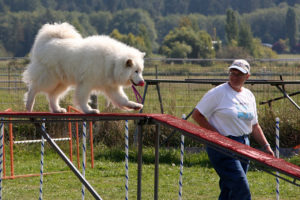Airlines Must Tally Pet Casualties
Airlines must begin tallying pet casualties
By LESLIE MILLER
The Associated Press
WASHINGTON — Plenty of vacation guides list camps that allow dogs or rank pet-friendly hotels, but until now there’s been no way to know which airlines are safest for four-legged travelers.
That’s about to change. Starting June 15, airlines will be required to report how many pets are killed, lost or injured on their flights.
The government estimates 2 million animals fly commercially every year. Many airlines allow small pets to travel in portable kennels under seats, where the owners are responsible for their safety. Larger pets travel in cargo holds, where they can be exposed to extreme heat or cold and loud noises from plane engines.
Nobody knows how many pets are killed or injured. Lisa Weisberg, spokeswoman for the American Society for the Prevention of Cruelty to Animals, suggested 1 percent, which would mean 20,000 animals a year. The airlines said the estimate is far too high.
But no one disputes that accidents happen.
When Sarah Stano’s husband was transferred from Portland to Greensboro, N.C., she chose Delta Air Lines to fly them there because it was the only carrier that would let her carry her three cats in the cabin.
But at the airport, she discovered one of the containers was too big to fit under the seat. Hereford, a fluffy white cat with black spots, had to go in the cargo hold.
“I’ll never forget the look he gave me when they took him away,” Stano said.
When Stano and her two children arrived in Greensboro, they found out Hereford had died from either cold or lack of cabin pressure. “We were really kind of devastated about the whole thing,” Stano said.
Stano sued Delta and reached an undisclosed settlement.
Delta spokeswoman Benet Wilson said the airline does its best to accommodate pets but doesn’t comment on individual cases.
Weisberg’s organization pushed Congress to pass the law requiring the airlines to report animal casualties. Supporters wanted it to cover animals shipped to zoos and those used for research and breeding, as well as household pets, and to require that cargo holds be temperature-controlled.
Airlines fought the effort, and lawmakers ended up approving a rule that requires tallying injuries and deaths of household pets.
Jack Evans, spokesman for the Air Transport Association, said the requirement could produce misleading information because the data will not include a casualty rate. An airline that carries many pets may appear to have a worse record than an airline that carries far fewer because it will have a higher number of injuries and deaths, said Evans, whose organization represents major airlines.
David Stempler, president of the Airline Travelers Association, said the new requirement may make some airlines reluctant to carry animals.
“Be careful what you wish for,” Stempler said. “Some carriers might do what Southwest does, which is not carry pets at all.”
Southwest spokeswoman Edna Ruano said the airline can’t guarantee animals would be comfortable and safe because it doesn’t have extra staff to take care of them between flights. Like most airlines, Southwest does allow seeing-eye dogs and other service animals in the cabin.
United Airlines transports all types of animals, from household pets to silverback gorillas and beluga whales. It has awarded extra frequent-flier miles to people who bring their pets with them.
“A lot of our customers enjoy traveling with their pets,” said United spokeswoman Robin Urbanski. As more hotel chains offer perks such as pet massages and dog walkers, more people are bringing their animal companions along on trips, she said.







